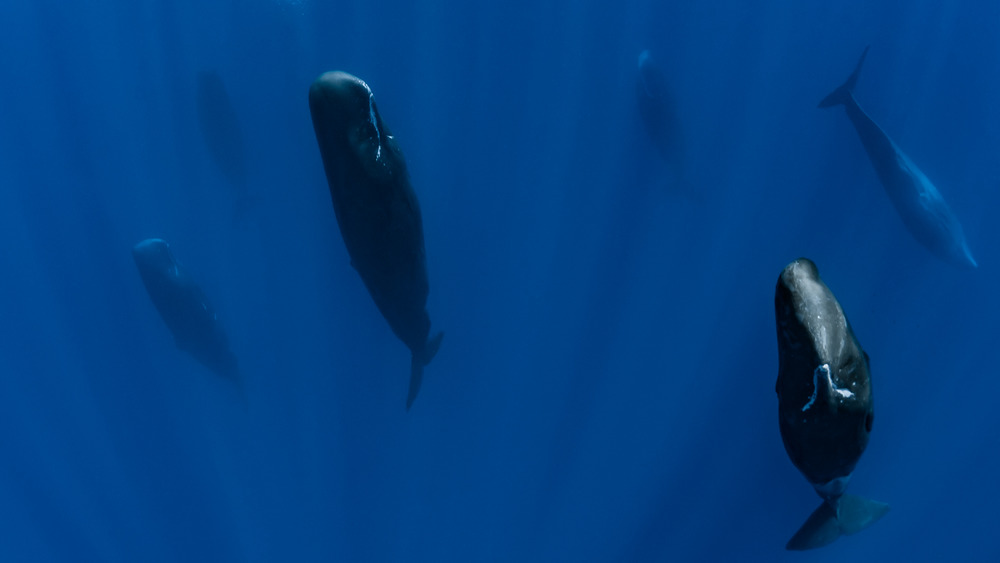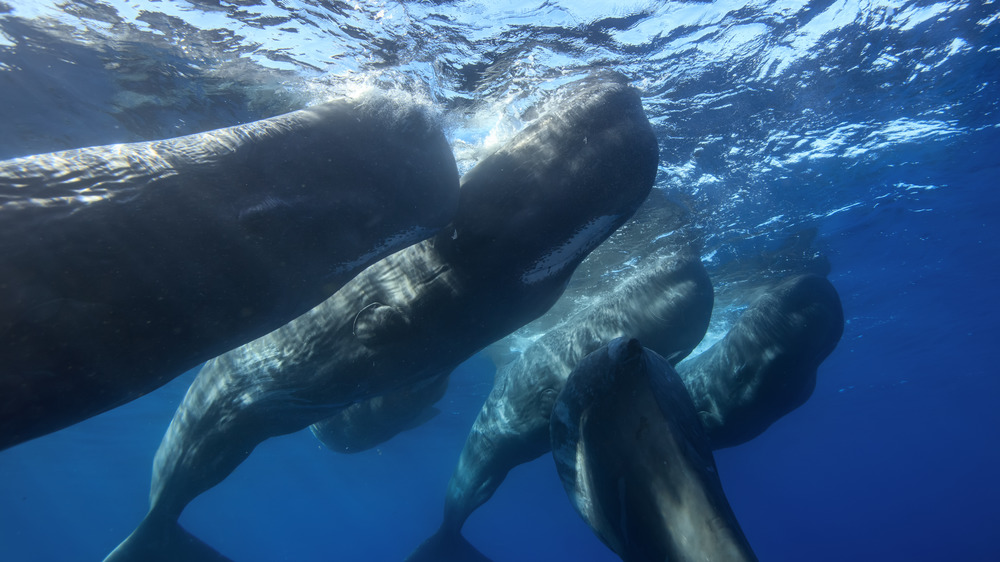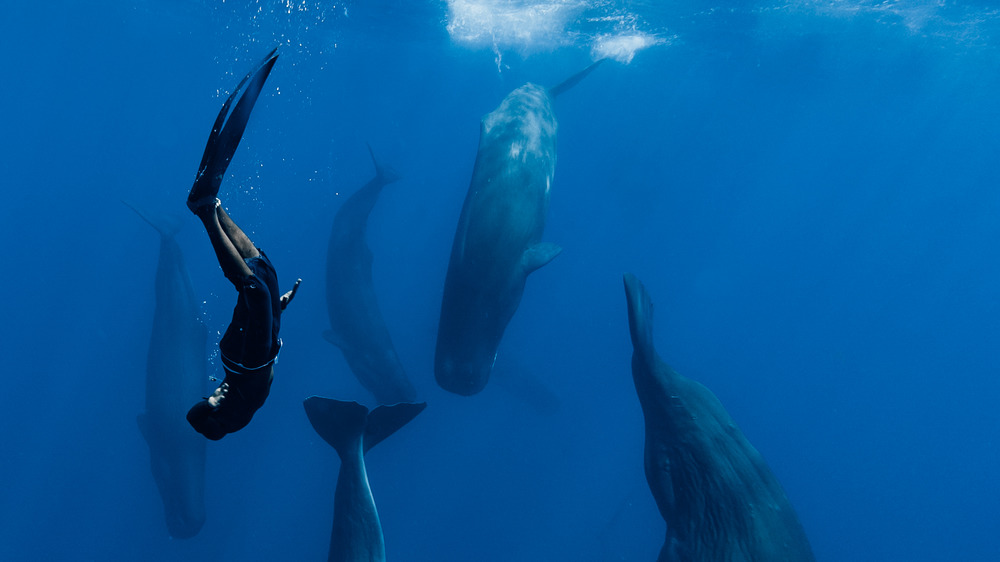The Fun Fact You Probably Didn't Know About Whales' Sleeping Habits
According to NASA, we know more about the surface of Mars and the moon than we do about the Earth's oceans. Still, we're making progress. For example, as Live Science reported in 2017, an underwater photographer came upon a pod of sperm whales exhibiting unique behavior that science has only begun to investigate and understand. Photographer and free diver Franco Banfi was diving in the Caribbean Sea, off the coast of the island country of Dominica, when he came across a pod of the giant aquatic mammals some 20 meters (65 feet) below the surface. And get this: They sleep "standing up." The group of six sperm whales were stock-still, drifting along with their tails down and their heads up, totally snoozing away.
Banfi had to act fast, because the whales only sleep for around 10 to 15 minutes at a time. "For this kind of picture, you come up and maybe you breathe three times and then you have to go down again because you want to take more pictures," said Banfi. "You cannot stay long on the surface, because the situation will change." And he said that their size makes it difficult to use the strobe lights that underwater photographers often use at such depths. "You have to use natural light," he said. "You have to look at where the sun is coming from and have the animal lit from the sun."
Sperm whales' sleeping habits were first observed in 2008
Banfi's photos confirmed what scientists had first noticed by accident in 2008. During a study of sperm whales' underwater activities that they published in the journal Current Biology, they observed the creatures performing drift dives both heads-down and heads-up. They wrote that "the greater depth attained during 'head-down' dives may provide more stability for a whale resting at sea." They came across the heads-up whales accidentally and noticed that three of the animals were unaware to their presence — in fact, completely unresponsive — even when the boat came within two meters of them. The whales only woke up when they were unintentionally touched by the researchers' boat. The scientists observed that this behavior was quite different from that of a whale that was horizontal at the time, which responded to the presence of their boats at around eight meters away.
Scientists usually study sleep habits in captive cetaceans (whales, dolphins, and porpoises) with EEG equipment or by observing the state of their eyes, but this kind of research isn't possible with wild whales this big. While the scientists admitted that more data would be necessary to confirm that the whales didn't respond to the boats because they were sleeping, the researchers were able to hypothesize that sperm whales sleep vertically while drifting along just below the surface of the ocean. And the funny formation wasn't the only unique thing they discovered about how these fascinating animals sleep.
Sperm whales sleep differently from other marine mammals
The researchers discovered that sperm whales sleep less than any other animal on the planet, spending only 7 percent of their day sleeping. According to DW, this discovery bumped giraffes from that record — those lanky land mammals spend just 8 percent of their day snoozing. As humans, one reason we're able to sleep for hours as we do is because we are involuntary breathers. It's relaxing to know you'll be able to breathe through the night. Sperm whales don't have this luxury. They have to intentionally surface to take breaths.
The 2008 study revealed that sperm whales also sleep differently from other cetaceans. According to National Geographic, dolphins, humpback whales, and other marine mammals are known to sleep horizontally at the surface and put only half their brains to sleep at a time so that they can continue to voluntarily breathe, stay in contact with others, or to keep an eye out for predators. The complete unresponsiveness of the snoozing sperm whales suggests that the underwater giants put their whole brains to sleep. They doze off completely in a super-concentrated bit of shut-eye that lets them take advantage of the ascents from the deep and spend most of their day awake. This could also be a difference between wild and captive whales, so for this — and who knows how many other reasons — much more research needs to be done on these fascinating sea creatures and their endlessly surprising habitat.


